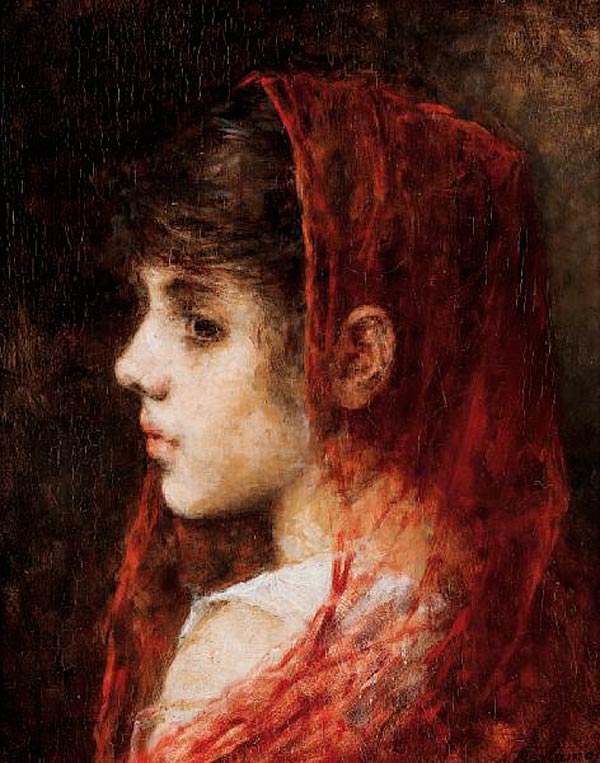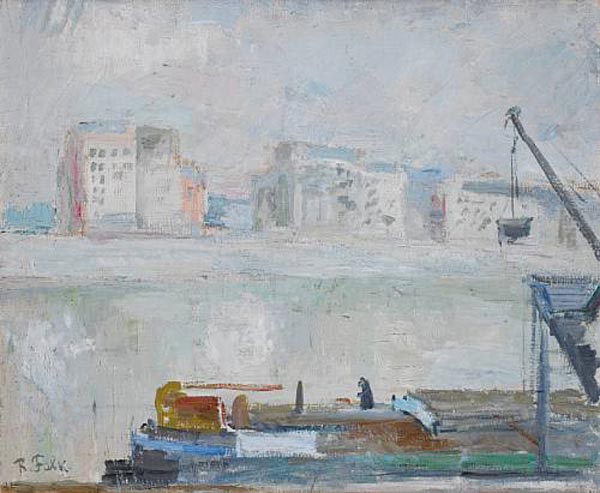Russian Bonhams auction will be held on December 1
According to organizers, the upcoming auction features a special scientific approach to presenting the most important lots
.
Among the top lots of trades - a magnificent mosaic table from the collections of the Winter palace, made at the Peterhof stone-cutting factory, golden feather, presented Prince Alexander Gorchakov, the picture "King Solomon» Svetoslav Roerich landscapes , Nicholas Roerich , Basil Shuhaeva and Robert Falk , portraits of Alexei Kharlamov , and Savely Sorin , a wonderful collection of Faberge clock and a collection of Russian icons.
proposed mosaic table is interesting and a great performance, and provenance . One of two known today as this type, it was created two years earlier counterpart, located in the British Royal Collection.
Made at the famous Imperial Peterhof stone-cutting factory, this table illustrates the endless wealth of Russian mineral resources and the legendary luxury of the Russian Imperial Court. According to documents of the State Historical Archive, the table was made in July 1842 for presentation to the Empress Alexandra Feodorovna, wife of Emperor Nicholas I, but for unknown reasons, was sent to the Grand Duchess Maria Alexandrovna, wife of Grand Duke and heir to the throne, Alexander N., and installed in her private apartments in the Winter Palace.
Gorgeous tabletop in the technique of relief mosaic. Lush floral arrangement recruited from colored cornelian, jasper, turquoise, coral, onyx and opal. Bouquet is surrounded by an ornamental border of lapis lazuli and marble. For making table Peterhof factory were paid 5,715 rubles, the sum in those days a considerable and no doubt reflecting the highest quality of stone-cutters and bronze. Reports Peterhof factory to keep the name the artist who created the sketch of flower arrangement - Austrian painter Joseph August Satori (1803-1868), who arrived in St. Petersburg in September 1839. Alexandra drew attention to exquisite floral arrangements, which he exhibited at two academic exhibitions, the Empress has acquired several works, one of them after a long time was in Ropsha Palace near St. Petersburg.
decorative bronze elements were ordered by the famous English shop owned by June 9, 1844 were paid 700 rubles in silver. Most likely that the bronze ornaments were made in a factory Tegelshteyna Charles (1798-1852), master of Finnish descent, performed the numerous orders for the company, "Nichols and Plinke».
Obviously, this made a masterpiece of masonry the most favorable impression on members of the royal family, as two years Peterhof factory was ordered very similar table, which was sent to London as precious gifts from the Emperor Nicholas I to Queen Victoria after his official visit to England in June 1844. Presented to the Russian Emperor table is still in the British Royal Collection and is currently exhibited at Buckingham Palace. Differing bronze finish, the rest of these two tables are very similar. Their mosaic tabletops are made in the same technique of volume mosaic in a similar floral designs. Gift table from the Russian emperor was taken to Windsor Castle in December 1844 and placed in a white room. The lithograph by Joseph Nash (1809-1878), transferring the living environment in 1860, Russian table is depicted standing on the right side of the window.
For unknown reasons, the table was ordered for the Empress Alexandra, peredaren was her daughter, Grand Duchess Maria Alexandrovna, 12 August 1844, he was moved with great caution and is set in the Gold Room of the Winter Palace. This grand hall was part of the premises of the imperial family affected by fire in 1837 and restored by the architect Alexander Bryullova . Watercolor AH Kolb captured the interior room in 1860 after its partial renewal of the architect Andrew Shtakenshnejdera. Luxurious gilt decoration of walls, inlaid parquet, massive bronze chandeliers created an impression of luxury, it is relevant to the appointment of the premises as a hall for official audiences Grand Duchess, chamber dance parties and Christmas trees of the family of Emperor Alexander II. Three small niches at the windows overlooking the Admiralty were created for private interviews and receptions. Seems so - one of three tables depicted in watercolor Kolb. Grand Duchess took this apartment until his death. In a letter to her brother she enthusiastically described the decoration of this room: large living room modeled on the throne hall of Bavarian kings, when the sun is shining here, the sight of her magnificent ».
Today in the Golden Room is located Hall Western carved cameos. Few of the original furniture decoration of this beautiful living room survived and survived the turbulent years of revolution. In the complex post-revolutionary period table was apparently removed from the Winter Palace and sold through a store of antiques and subsequently ended up in private collections in Germany. Never before has this masterpiece of Russian decorative art of the middle of the XIX century was not present, and until now not been known to specialists.
gold-plated pen, studded with pearls, emeralds and decorated diamond monogram Serene Prince and the State Chancellor Alexander Mikhailovich Gorchakov (1798-1883) - the subject of unique historical importance. Presented to wives of noblemen in St. Petersburg on the day of the 50-year anniversary of service in the Ministry of Foreign Affairs, it symbolizes the enormous contribution made by this brilliant diplomat, an experienced statesman and flexible policies to strengthen Russia's international prestige and increasing its impact on the European scene. On the back of the pen engraved with the date that marks the most significant step in his brilliant career.
art history knows practically no portrait images of King Solomon, and this sense, the pattern of Svetoslav Roerich, one might say, is unique.
The work was written in 1923 in Paris. There Svetoslav Roerich made a stopover on the way from America to India, where he went on a trip with his parents. This period in his work was crucial. For several months, Svetoslav Roerich became acquainted with the best examples of painting, traveling in Europe. After visiting Italy in the summer of 1923, they were written by two paintings, "St. Francis of Assisi" and "Solomon." They opened up an entirely new perspective, a young artist intended to create a series of 46 canvases. These paintings were the first in a planned them to the gallery of portraits of saints and devotees of various religions. On board the ship Svetoslav Roerich wrote from Port Said to New York City: "Prepare for my work in India ... We have been working on a large suite of paintings, portraits of all the great saints and spiritual leaders." According to the author, this series was to be a separate exhibit showing the idea of "unity of religions through the arts." King Solomon is depicted in the portrait with a cup in his hands, the background rises the Temple, erected by him on Mount Testament. Bishop's finger - a ring with a Star of David. The basis of the picture is likely to put the legend referred to the artist's mother, Helena Roerich, in her diary, and tells about the hiding place of Solomon in Jerusalem, where he kept a bowl of the king. However, Svetoslav Roerich gives a picture of his own interpretation of the personality of the wise ruler of the eastern Solomon: drunk the cup of destiny, sacrifice themselves for the construction of the Great Temple. " This idea is clearly borrowed from his father, an artist, Nicholas Roerich, who arrived in the Himalayas in the essay "The strings of the earth" noted "the desire of Solomon's Temple to the One." Ideological affinity is reflected in the portrait. Svetoslav Roerich gave Solomon physical traits of his father, so in the guise of the wise King Solomon is easily guessed Nicholas Roerich.
portrait painted in an unusual style decision. Svetoslav Roerich since 1922 has been fascinated by the theatrical painting. He helped his father in the creation of scenery for the opera by Rimsky-Korsakov's "Snow Maiden", which is staging performed in Chicago, and develop sketches of costumes for the American dancer Ruth Page. Headwear and Apparel Solomon richly adorned with decorative elements, his beard is written large strokes, creating a sense of relief sculpting, or inherent in the manner of the hand of the sculptor (Svetoslav Roerich studied sculpture department at the University of Massachusetts). Theatricality of the portrait gives a convincing way and gives him the power of fine art.
On the reverse side of the picture, there is one image, full of Svetoslav Roerich - on horseback, and beside him a servant of the bird (the scene of falconry hunting). Here the artist showed himself as a skilled stylist and copyist. On the board made an illustration to a fairy tale, since summer of 1923 in France Roerich signed a contract for the decoration of the book of fairy tales (the contract had to cancel at the insistence of his father). This work is inspired by Italian painter Benozzo Gozzoli, which combines a fabulous interpretation of the plot with a decorative brilliance of color (embossed horses, golden bridle, expressive costumes). Svetoslav Roerich studied the art of early Renaissance in Florence in July 1923. That there are magnificent frescoes Gozzoli on the life of St. Francis and St. Augustine, as well as his famous painting "Procession of the Magi».
Paintings "Solomon" and "Saint Francis of Assisi, along with other works of Svetoslav Roerich (of 40 paintings and sketches) were taken from Europe to New York in autumn 1923 the president of the International Arts Center "The crown of the world" by Louis Horsham. He planned to organize the first major exhibition of the artist in America. The exhibition took place in winter 1925, but not in Europe, but mainly in the Indian stuff. By that time, Svetoslav Roerich wrote a lot of new work and earlier, including the portrait of Solomon, are all gone before Luis Horsham.
Other top lots of "Russian auction" Bonhams December 1, 2010:
 Nicholas Roerich
Nicholas Roerich
Himalayas, the view from the Ting Dong-ke. 1928
canvas on board, tempera. 33 x 41
Bonhams. 01/12/2010. Lot number 71
Estimate: 80-100 thousand pounds
Source: Ivan Aivazovsky Sunset over the Golden Horn (View of Constantinople from Pery)
Ivan Aivazovsky Sunset over the Golden Horn (View of Constantinople from Pery)
Oil on board. 22,5 x 28
Bonhams. 01/12/2010. Lot number 8
Estimate: 80-120 thousand pounds
Source:
 bonhams.com bonhams.com |  Robert Falk Robert Falk Landscape with a barge and a crane Oil on canvas. 60 x 73 Bonhams. 01/12/2010. Lot № 76 Estimate: 100-150 thousand pounds Source: |






